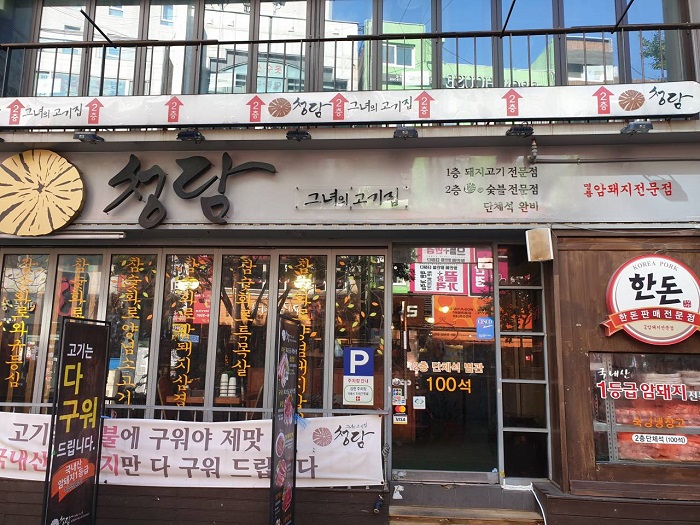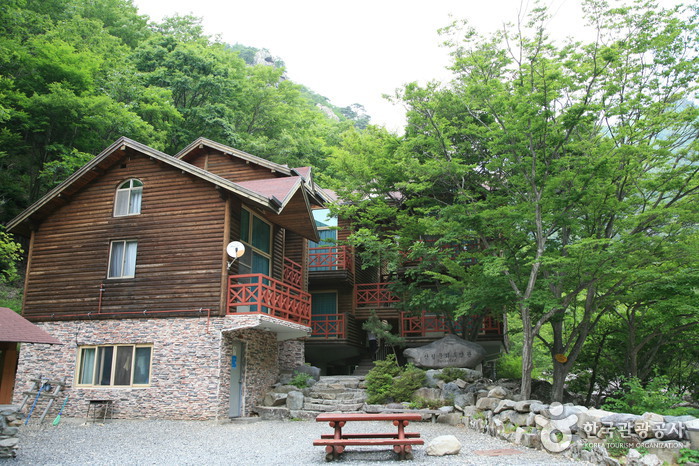Gimhae Arts and Sports Center (김해문화의전당)
19.2Km 2022-12-29
2060, Gimhae-daero, Gimhae-si, Gyeongsangnam-do
+82-55-320-1234
The Gimhae Arts and Sports Center is a performance hall for high-class performances. Maru Hall is a multi-purpose theater that also contains a moving orchestra shell with a sound reflection board for a smaller concert hall inside the theater. Nuri Hall is an experimental theater for performances in a variety of themes. The center also features the outdoor theater Aedureum Madang, Yunseul Art Gallery, Media Center, Sports Center, and Aram Learning Center, as well as a café and restaurants.
Mh Modern House - Homeplus Gimhae Branch [Tax Refund Shop] (MH 모던하우스 홈플러스김해)
19.2Km 2024-04-23
2078, Gimhae-daero, Gimhae-si, Gyeongsangnam-do
-
Homeplus - Gimhae Branch [Tax Refund Shop] (홈플러스 김해)
19.2Km 2024-04-18
2078, Gimhae-daero, Gimhae-si, Gyeongsangnam-do
-
Olive Young - Homeplus Gimhae Branch [Tax Refund Shop] (올리브영 홈플러스김해점)
19.2Km 2024-06-27
2F, 2078, Gimhae-daero, Gimhae-si, Gyeongsangnam-do
-
Cheongdam(청담)
19.3Km 2020-12-28
1 Yeonan-ro Yeonje-gu Busan
+82-507-1434-0178
It is a great place for group dining and gatherings. This restaurant's signature menu is dried yellow croaker aged in barley rice. This Korean dishes restaurant is located in Yeonje-gu, Busan.
Sinbulsan Falls National Recreational Forest (국립 신불산폭포자연휴양림)
19.3Km 2021-06-03
200-78, Eoksaebeol-gil, Ulju-gun, Ulsan
+82-52-254-2123
Sinbulsan Falls National Recreational Forest, located at the foot of Sinbulsan Mountain, is noted for the Yeongnam Alps and the beautiful surrounding valleys. Famous forest attractions in particular are the mountain's valleys and waterfalls. The Parasopokpo Falls are a picturesque series of cascading falls. Near the falls are old Buddhist temples and the silver grass field of Sinbulsan Mountain. The forest houses a walking path, health training facility, forest exhibition hall, and accommodation facilities such as the Cabin House, Forest Recreation Center, a camping deck and a camping site.
Hyewonjeongsa Temple (혜원정사)
19.3Km 2024-02-22
47 Gobun-ro 68beon-gil, Yeonje-gu, Busan
The "jeongsa" of Hyewonjeongsa Temple refers to a temple, meaning a place where practitioners dwell and dedicate themselves to spiritual cultivation. It houses various halls such as Daeungbojeon, Manbuljeon, Samseonggak, Bell Pavilion, Yosachae, and Statue of Avalokitesvara Bodhisattva. There is a hiking trail leading to the summit of Myobongsan Mountain, from where one can enjoy a panoramic view of Busan city.
Sanctum Book & Café (제이스 생텀커피)
19.3Km 2024-02-26
132-20 Icheon 8-gil, Ilgwang-eup, Gijang-gun, Busan
Sanctum Book & Café, surrounded by a serene cypress forest, offers a unique experience where you can enjoy seasonally curated books with a picturesque forest view. The establishment is thoughtfully designed with the first floor serving as a counter and café area, the second floor dedicated to a book café, and the third floor featuring a rooftop space. They take pride in roasting their coffee beans in-house and also operate a bakery. In addition to the café, this location also boasts a range of facilities including a glamping site, swimming pool, walking trails, and a playground.
Tomb of King Suro (수로왕릉)
19.3Km 2024-01-23
26 Garak-ro 93beon-gil, Gimhae-si, Gyeongsangnam-do
+82-55-332-1094
King Suro founded the Garak Kingdom in AD 42 and married Heo Hwang-ok, a princess from the Indian country of Ayuta, in AD 48. He was the founder of the Gimhae Kim family. Heo Yeop, a Yeongnam governor, gave the tomb its current look in the 13th year of the reign of King Seonjo (1580). The tomb compound includes various buildings, including the Sungseonjeon (where the ancestral tablets of King Suro and his queen are kept), Anhyanggak, Jeonsacheong, and Jegigo, as well as stone structures, such as a sindobi (tombstone) and gongjeokbi (monument established to pay homage the deceased). The tombstone in front of the royal tomb was built in the 25th year of the reign of King Injo (1647) of the Joseon dynasty. The name Sungseonjeon was bestowed on the tomb by King Gojong in the 21st year of his reign (1884).
Ancient Tombs in Daeseong-dong, Gimhae (김해 대성동 고분군)
19.4Km 2020-04-02
126, Gayaui-gil, Gimhae-si, Gyeongsangnam-do
+82-55-330-3934
The tumuli in Daeseong-dong, located to the east of the Royal Tomb of Kim Suro, reflect the formation and development of the Gaya Era. The Daeseong-dong Tumuli are located in the center of the shell mounds of Hoehyeon-ri, the location of the founding of the Gaya Kingdom according to local legend.
The tumuli relics were excavated by researchers from the Kyungsung University Museum from 1990 to 1992 and were found to be the common burial ground of the dominant class of the Gaya Kingdom. On the hilltops, which were viewed as prime burial places, are the tombs of kings and rulers; on the slopes are the tombs of the lower classes.
A total of 136 tumuli were found in the Daesong-dong area. Further investigation of the tumuli revealed several important and interesting facts. First, from the end of the third century, men and horses were buried alive along with the dead. Also, weapons were bent and buried as well, with many of these artifacts being unearthed among the tumuli. Other materials found in the tumuli such as cylindrical bronze items, pinwheel-shaped bronze items, and jasper items showed that Gaya was involved in trade with Japan. The Daeseong-dong Tumuli is significant in that it gives a glimpse into the political and social structure of the Gaya Kingdom, and the cultural exchange between Korea, China, and Japan.

![Mh Modern House - Homeplus Gimhae Branch [Tax Refund Shop] (MH 모던하우스 홈플러스김해)](http://tong.visitkorea.or.kr/cms/resource/56/2885956_image2_1.jpg)
![Homeplus - Gimhae Branch [Tax Refund Shop] (홈플러스 김해)](http://tong.visitkorea.or.kr/cms/resource/59/2885959_image2_1.jpg)


 English
English
 한국어
한국어 日本語
日本語 中文(简体)
中文(简体) Deutsch
Deutsch Français
Français Español
Español Русский
Русский